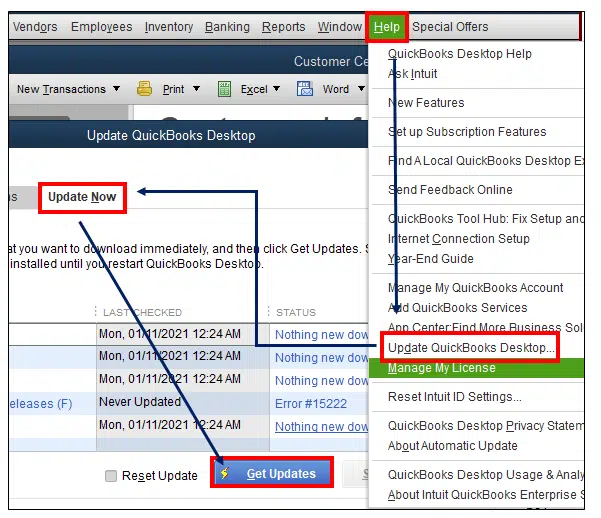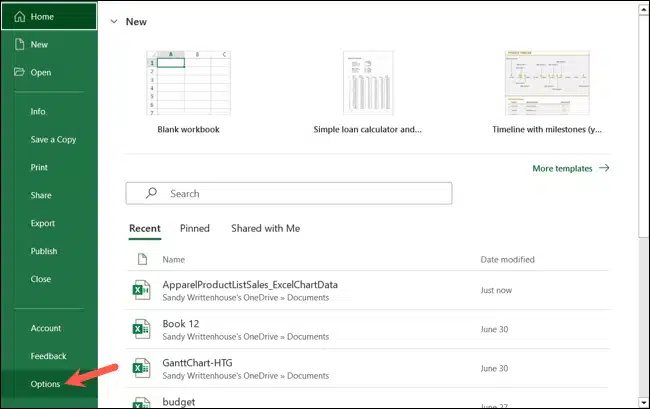Strategies to Fix QuickBooks Compile Error in Hidden Module
QuickBooks is a highly recommended accounting solution tailored to small and medium-sized businesses. However, like any software, it can encounter errors that disrupt your workflow. One such issue is the “Compile Error in Hidden Module,” which might occur while accessing a crucial module available in QuickBooks. This error can be perplexing, especially if you are unfamiliar with the technical aspects of QuickBooks or Microsoft Office, which often interact with each other in this context.
This comprehensive guide will explore the causes, symptoms, and detailed troubleshooting steps to resolve the “Compile Error in Hidden Module” in QuickBooks.
Do you frequently encounter the QuickBooks Compile error in a hidden module? If yes, we advise you to contact +1-866-408-0444 our QB professionals quickly to resolve the issue immediately.
Why Do Users Continuously Receive QuickBooks Excel Compile Error in Hidden Module?
In this blog section, we have described all the possible factors that might be responsible for the appearance of the QuickBooks Excel Compile error in the hidden module. As a result, it will help you resolve the issue without consuming much time.
Misconfigured Macros Settings in Excel-
If the Excel macros are not set up appropriately or carry incompatible code, users might have a QuickBooks compile error in the hidden module.
Using the Corrupt or Older version of QuickBooks-
The users might encounter this issue if they are not using the updated QuickBooks Desktop or if there is any corruption in the application.
Issues with Adobe Acrobat or Reader-
QuickBooks often interacts with Adobe Acrobat or Reader to generate PDF reports. However, if the settings of Adobe Acrobat or Reader are not properly configured, then users might also experience this error.
Presence of Damaged or Missing Components-
Essential components required for QuickBooks to interact with Microsoft Office might be missing or damaged.
Problem with the User Permissions and Security Settings-
Compile errors can occur if the user account does not have the necessary permissions to access certain files or execute scripts. The issue may also arise if overactive antivirus or security software blocks or interferes with executing macros and scripts.
Read More: Update QuickBooks Desktop to 2024
Symptoms that Might Lead to Compile Error in Hidden Module QuickBooks
Flashing of the Error Message:
The most obvious symptom is the error message, which appears as a pop-up when opening or closing QuickBooks or Excel.
Sluggish Performance of the Application:
QuickBooks and Excel may slow down or become unresponsive.
Continuous Crashing or Freezing
Frequent crashes or freezes can occur when performing tasks that involve Excel macros or generating PDF reports.
Inability to Use the Compile Feature
Features that rely on VBA code or PDF generation may not work correctly.
Also See: Upgrade QuickBooks Desktop to 2024
Must-Know Tips Before You Fix Compile Error in Hidden Module Excel QuickBooks
To minimize the risk of encountering the Compile error in hidden module Excel QuickBooks in the future, consider th following preventive measures.
Schedule the Backup of Data:-
Regularly creating a backup of your QuickBooks data and other important files to ensure quick recovery from any issues.
Software Must be Up-to-Date:-
Update QuickBooks, Microsoft Office, and your operating system regularly to ensure compatibility and access to the latest features and fixes.

Appropriate Installation of the Application:-
Another important thing is to confirm that all software, including QuickBooks and Microsoft Office, is installed correctly and without interruptions.
Make Use of Trusted Add-Ins:-
To avoid conflicts, it is necessary to utilize only add-ins and plugins from trusted sources.
Conduct the Regular Maintenance:-
You must perform regular maintenance on your computer, including running antivirus scans, cleaning up temporary files, and defragmenting your hard drive.
Best Effective Solutions to Compile Error in Hidden Module QuickBooks Desktop
It is mandatory to get the right directions to handle the Compile error in hidden module QuickBooks Desktop so that it is much more convenient to resolve the problem. Here, we have covered all the simple ways to tackle the issue. Ensure that you apply the troubleshooting steps in the same manner as stated below.
Solution 1: Get Ready to Install the Latest Version of MS Excel

Updating Microsoft Excel is a crucial step in resolving the “Compile Error in Hidden Module” in QuickBooks Desktop. This is so because the error is often related to compatibility issues between QuickBooks and the Office suite, particularly Excel.
- Before you begin the process, you must verify which version of Microsoft Excel you are working on. To do so, open the Excel application and navigate to File > Account.
- Thereon, beneath the “Product Information” column, look for the version number and update channel.
- Afterwards, go to the File menu in the top-left corner of the MS Excel application.
- In the next step, select Account or Office Account from the menu.
- Subsequently, below the “Product Information” column, find the Update Options button > Update Options.
- Once you are done installing all the necessary updates, restart Excel.
- Finally, reopen QuickBooks Desktop and check if the compile error is resolved.
Solution 2: Disable Add-Ins and Plugins To Rectify the Issue
Add-ins and plugins are third-party or built-in extensions that enhance the functionality of Excel. However, there are certain instances when add-ins interfere with the normal operation of other applications, including QuickBooks. That’s why users end up with the Compile Error in Hidden Module Update Reports QuickBooks. So, to fix the issue, it is crucial to turn off the add-ins and plugins by implementing the following steps.
- In the first stage, launch the Excel application on your workstation.
- After this, go to File > Options > Add-Ins.
- Now, select “COM Add-ins” from the Manage box and click “Go.”
- You are supposed to clear the checkboxes for any add-ins you want to disable and click “OK.”
- In the next step, launch the QuickBooks Desktop on your device and then click Edit > Preferences.
- Thereon, select “Integrated Applications” and then the “Company Preferences” tab.
- Finally, you must clear the checkboxes for any add-ins you want to disable and click “OK.”
Solution 3: Configure the Issues With the VBA Code
QuickBooks uses VBA for some of its functionalities, especially when integrated with Microsoft Office applications like Excel. Errors in the VBA code might lead to QuickBooks compile error in hidden module, making it essential to identify and correct any issues in the code.
- Begin the procedure by opening the QuickBooks Desktop and press Alt + F11 to open the VBA Editor on your workstation.
- After that, from the Project Explorer window, locate the module causing the error and double-click to open it.
- You are supposed to search for syntax errors, missing references, or other issues. If you spot any errors, fix them at that time.
- Finally, save the changes and shut down the VBA editor after making the necessary changes to verify if the issue persists.
Solution 4: Conduct the Reinstallation of the QuickBooks Desktop
Reinstalling the QuickBooks Desktop will help you eliminate the bugs and technical faults you may encounter while accessing the application. As a result, it may also help you to eliminate the QuickBooks Compile Error in Hidden Module.
- In the first place, launch the Control Panel and navigate to the Programs > Programs and Features option.
- After this, you must select the QuickBooks version that was previously installed on your device from the options available.
- Thereon, click the Uninstall button and follow the on-screen instructions to uninstall the software.
- Now, you need to Download the latest version of QuickBooks from the official website or use your installation disc.
- In the next step, follow the on-screen instructions to install the software.
- Finally, open the QuickBooks application and see if the error is resolved.
Solution 5: Run the Updated Version of QuickBooks Install Diagnostic Tool
The users can also eliminate the Compile Error in Hidden Module Excel QuickBooks by running the QuickBooks Install Diagnostic Tool.
- Initially, you must visit the official Intuit website to download the QuickBooks Tool Hub.
- After doing this, open the downloaded file (QuickBooksToolHub.exe).
- Thereon, you must follow the on-screen instructions to complete the installation.
- Once you are done installing the QB Tool Hub, open the QuickBooks Tool Hub.
- Now, double-click the QuickBooks Tool Hub icon on your desktop to open it.
- Afterwards, from the QuickBooks Tool Hub, select the “Installation Issues” tab from the left-hand menu.
- The users must click “QuickBooks Install Diagnostic Tool” in the “Installation Issues” tab.
- Consequently, you will notice that the QuickBooks Install Diagnostic Tool will begin to scan your system for issues related to the QuickBooks installation.
- Next, the users need to wait patiently as this process may take some time (up to 20 minutes), depending on your computer’s performance and the extent of the issues.
- After the tool completes its diagnostic and repair process, you will be prompted to restart your computer. Ensure you save any open work and restart your computer.
Know About: QuickBooks Unrecoverable Error
Solution 6: Verify The Template Issues To Rectify the Issue
If the above-listed solution doesn’t help fix the Compile Error in Hidden Module Update Reports QuickBooks, try to resolve the template issues.
- The first step is to open the QuickBooks Desktop on the workstation.
- Afterwards, navigate to the Lists > Templates.
- Thereon, you must verify if any templates are creating the problems.
- You are supposed to right-click on the suspected template and select “Edit Template.”
- Soon after this, if you identify a corrupted template, recreate it from scratch.
- Finally, you must delete the old template and use the newly created one.
Solution 7: Rectify the Issues With the QuickBooks Desktop
Repairing problems with QuickBooks Desktop might also help users rectify the Compile Error in Hidden Module Excel QuickBooks.
- In the beginning, verify that the QuickBooks Desktop and all other applications are closed.
- Afterwards, search the Start menu for “Control Panel.”
- You are supposed to open the Control Panel and select “Programs and Features.”
- In the next step, find QuickBooks Desktop in the list of installed programs.
- Subsequently, click on QuickBooks Desktop and select “Repair.”
- End the entire process by following the on-screen instructions to complete the repair process.
Read More : QuickBooks Install Diagnostic Tool
Summarizing the Above!!
We hope that you can easily wind up with the QuickBooks Compile error in hidden module after performing the troubleshooting methods listed above. Even after implementing the solutions above, if you fail to rectify the issue, we advise you to connect with our QB professionals immediately at +1-866-408-0444. They will guide you in the best possible manner to obtain the right assistance without any further delays.

Intuit has stopped providing new subscriptions for the QuickBooks Desktop 2024 and previous versions.
You can migrate to QuickBooks Online or switch to QuickBooks Desktop Enterprise.
Recent Posts
-
What Actually Causes QuickBooks Error 15311 & Expert Tips to Fix It?
-
How to Fix QuickBooks Error 557 (Payroll Update Error) – Causes & Solutions
-
Resolve QuickBooks Error 1402 – Windows & Registry Fixes
-
How to Resolve QuickBooks Error 400 Bad Request
-
How to Create QuickBooks Journal Entry in Online & Desktop Versions?



